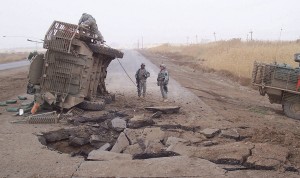TUESDAY, 16 SEPTEMBER 2014
John Hart, Jr., M.D., from the Center for Brain Health at The University of Texas at Dallas describes how the team are "trying to find where thought exists in the mind. We know that groups of neurons firing on and off create a frequency and pattern that tell other areas of the brain what to do. By identifying these rhythms, we can correlate them with a cognitive unit such as fear."The study encompassed 26 adults who were shown 224 randomized ‘real’ or scrambled images that were either threatening or non-threatening, and their brain activity monitored by electroencephalography (EEG). Using this technique, the team identified theta and beta wave activity connected to visually threatening images involving an early increase in theta activity in the occipital lobe (the brain’s visual processor), and a later increase in theta power in the frontal lobe which mediates thinking and decision-making. Perturbations in the waves associated with the impulse to run (beta band) also correlated with threatening images.
The team hope that their research will serve as a foundation upon which future studies build to assist individuals with PTSD.
Written by Joanna-Marie Howes.
DOI: 10.1016/j.bandc.2014.08.003

